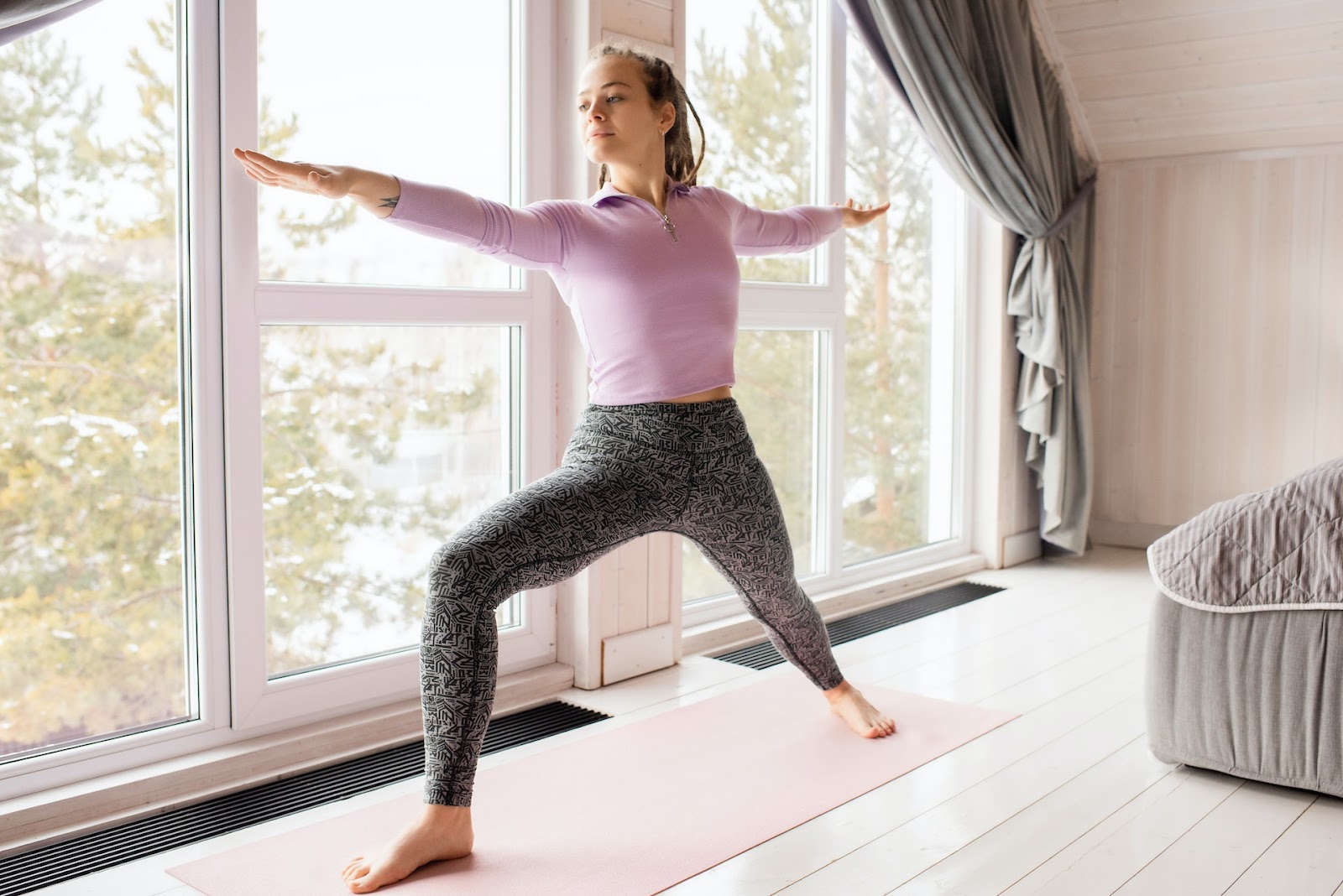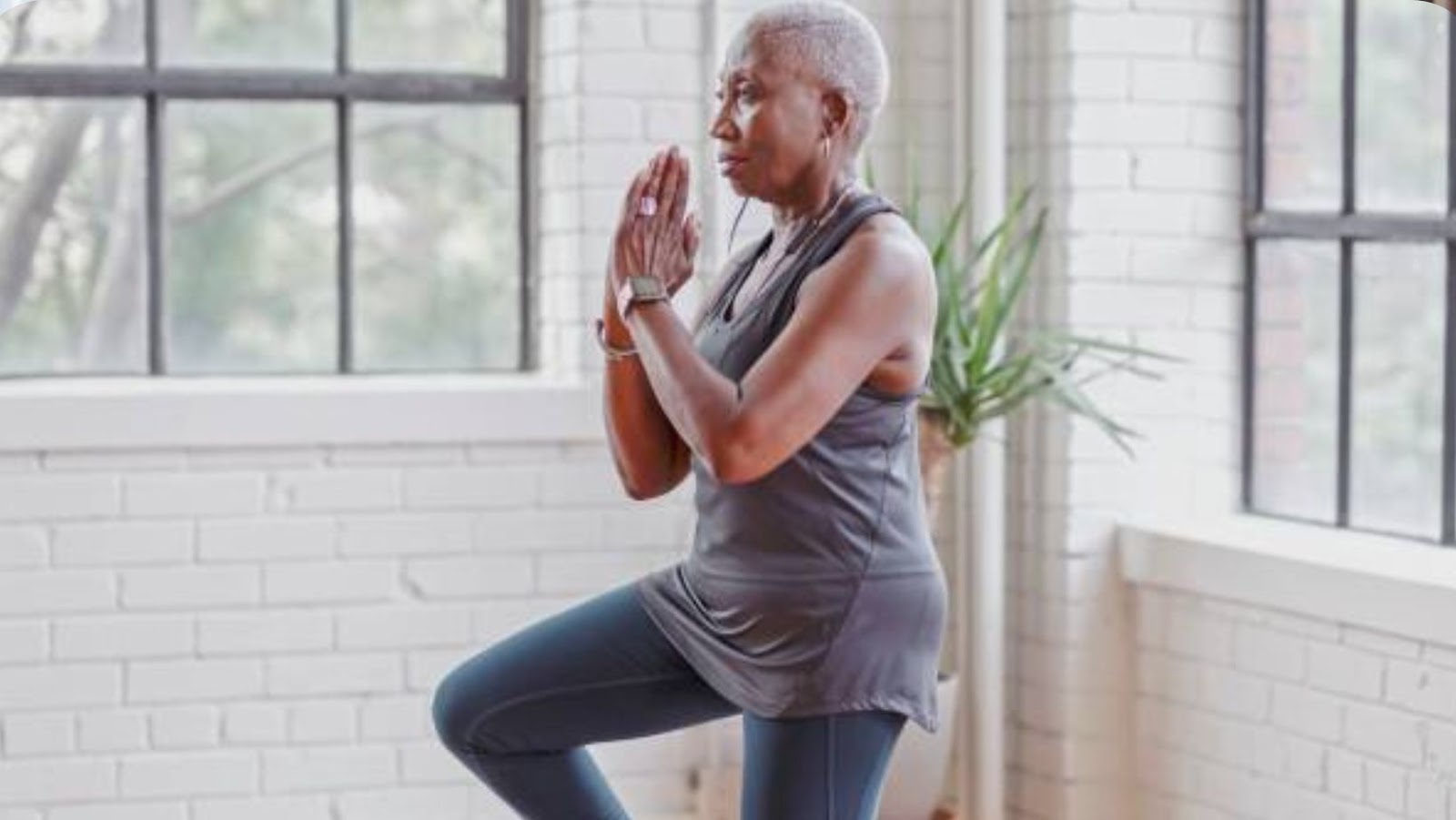Balance stretching is a type of stretching that helps to improve balance, coordination and body alignment. This type of exercise helps to re-establish the natural balance of the body while strengthening the muscles that support it.
In this article, we’ll explore the benefits of balance stretching and how it can help you improve your overall health and wellbeing.
Explain What is Meant by Balance Stretching.
Balance stretching is an effective technique that incorporates balance exercises into stretches to help improve stability and range of motion.
| Benefits of Balance Stretching |
| Improved balance and stability: Balance stretching helps to strengthen the muscles used for stability, reducing the risk of falls and injury. |
| Increased range of motion: Balance stretching helps to improve flexibility and mobility in the joints, allowing you to move more freely. |
| Reduced muscle tension: Stretching helps to release tension in the muscles, reducing tightness and discomfort. |
| Improved posture: Balance stretching helps to improve alignment and posture, reducing the risk of back pain and other discomforts. |
Incorporating balance stretching into your daily routine can significantly improve your physical well-being and overall quality of life.
Importance of Balance Stretching
Balance stretching is a form of exercise that targets the muscles, joints, and ligaments that help maintain balance and stability in the body. It involves a series of movements that focus on stretching and strengthening these areas, helping to improve overall balance and coordination.
The benefits of balance stretching are numerous, including increased flexibility and range of motion, improved posture and alignment, and reduced risk of injury. Additionally, balance stretching can help alleviate stress and tension in the body, promoting relaxation and overall well-being.
By incorporating balance stretching into your daily routine, you can improve your physical performance, boost your confidence, and enjoy a healthier, more active lifestyle. Pro Tip: Pair balance stretching with other forms of exercise, such as strength training or cardio, to achieve maximum benefits for your body.
Types of Balance Stretches
Balance stretching is a type of exercise that focuses on stability and flexibility. There are various types of balance stretches, and each one has its unique benefits. Here are some of the most popular ones:
| Tree pose: | This yoga pose involves standing on one foot while placing the sole of the other foot on the opposite thigh. It improves balance, stability, and hip flexibility. |
| One-legged squat: | This stretch involves standing on one leg and squatting down, bending the knee of the standing leg. It improves balance, leg strength, and stability. |
| Warrior III: | This yoga pose involves balancing on one leg while leaning forward with your arms and other leg extended behind you. It improves balance, core strength, and leg flexibility. |
The benefits of balance stretching are numerous, including increased flexibility, stability, coordination, and body awareness. Additionally, balance stretching can help prevent falls and injuries, especially in older adults. Pro tip- Consult a trainer or physiotherapist before starting any new exercise routine.
Physical Benefits of Balance Stretching
Balance stretching offers a multitude of benefits for your physical health. It can help improve the range of motion of your muscles and joints, strengthen your core muscles, and even improve postural alignment. Moreover, balance stretching can also help reduce the risk of injury by providing the necessary flexibility for your muscles.
Let’s explore these physical benefits of balance stretching in more detail.
Improves balance and Coordination
Balance stretching has several physical benefits, some of which are improved balance and coordination, increased stability, and reduced risk of falls.
Regular practice of balance stretching exercises can strengthen the muscles, joints, and ligaments that support the body and maintain proper posture. These exercises also enhance flexibility, range of motion, and proprioception, which is your body’s ability to sense its position and movement in space. By improving these skills, balance stretching can help prevent injuries and improve athletic performance.
Perform balance stretching exercises in various positions, such as standing, sitting, and lying down. Try to hold each pose for a few seconds and gradually increase the duration as your balance and coordination improve. Combine balance stretching with other forms of exercise, such as strength training and cardio, for a well-rounded fitness routine.
| Pro tip: | To challenge your balance and coordination further, try closing your eyes during balance stretching exercises or performing them on an unstable surface such as a balance board. |
Enhances Muscle Strength and Flexibility
Balance stretching is an effective way to enhance muscle strength and flexibility, leading to improved overall physical health and well-being.
Here are the physical benefits of balance stretching:
| Improved posture: | Balance stretching helps to improve your posture by strengthening the muscles in your back, neck, and shoulders. |
| Increased range of motion: | By stretching your muscles in different directions, balance stretching can help you achieve greater flexibility and range of motion in your joints. |
| Increased muscle strength: | Balancing poses engage various muscle groups and help to build strength in your legs, core, and upper body. |
| Improved balance and coordination: | Balance stretching poses challenge your balance and help to improve your coordination and stability. |
| Better athletic performance: | By improving your balance, coordination, and flexibility, balance stretching can help to enhance your athletic performance and reduce your risk of injury. |
Pro Tip: Incorporate balance stretching into your daily routine to improve your overall physical health and well-being.

Reduces the Risk of Falls and Injuries
Balance stretching is an effective way to reduce the risk of falls and injuries. It helps in improving muscle coordination, increasing flexibility, and restoring balance and stability to the body.
Here are the physical benefits of balance stretching:
| Benefit | Description |
| Improved muscle coordination | Balance stretching helps in activating and strengthening the muscles that support balance and stability, leading to better muscle coordination and control. |
| Increased flexibility | Stretching exercises help in loosening and lengthening the muscles and joints, leading to improved flexibility and range of motion. |
| Enhanced balance and stability | Balance stretching exercises help in promoting better balance and stability by improving the body’s ability to maintain a stable position and handle movements and changes in direction. |
As a result, regular practice of balance stretching can help reduce the risk of falls and injuries, especially in older adults and individuals with neurological conditions.
Mental and Emotional Benefits of Balance Stretching
Balance stretching is a type of stretching and exercise that can help improve your coordination, body awareness, and overall balance. Not only does it provide physical benefits, but it also has mental and emotional advantages.
This section will dive deeper into the mental and emotional benefits of balance stretching and how it can help improve one’s mood and overall quality of life.
Reduces Stress and Anxiety
Balance stretching has several mental and emotional benefits, including reducing stress and anxiety levels. The combination of physical movement with mental focus and concentration can help calm the mind, release tension in the body, and promote relaxation.
Here’s how balance stretching can reduce stress and anxiety:
| Increases blood flow and oxygen levels in the brain, promoting a sense of calm and relaxation. |
| Helps release physical tension in the muscles, reducing the physical effects of stress. |
| Promotes mindfulness and mental focus, helping to reduce racing thoughts and promote relaxation. |
Incorporating balance stretching into your daily routine can help you manage stress and anxiety levels and promote mental wellness. Consider practicing balance stretching for just a few minutes a day to experience the benefits for yourself.
Improves Focus and Concentration
Balance stretching provides several mental and emotional benefits, including improving focus and concentration.
This type of stretching involves standing on one foot or making small, controlled movements on an unstable surface, such as an exercise ball, to activate and engage the muscles responsible for balance and stability.
When done regularly, balance stretching can help improve cognitive function, increase attention span, and sharpen mental focus.
In addition, balance stretching can help reduce stress, anxiety, and depression by promoting feelings of relaxation and a sense of calm.
Whether performed as part of a yoga or Pilates practice or as a standalone activity, balance stretching can be a beneficial addition to any fitness routine.
Enhances Overall Well-Being and Quality of Life
The benefits of balance stretching are not just limited to physical well-being, but also extend to mental and emotional health, leading to an enhanced quality of life overall.
Some of the benefits of balance stretching are:
| Reduces stress and anxiety: | Practicing balance stretching can calm your mind, reduce stress and anxiety, and boost your mood. |
| Increases focus and concentration: | Regular stretching can improve your focus and concentration by increasing blood flow to your brain, helping you stay alert and focused. |
| Improves posture and balance: | Balance stretching exercises can help improve your posture and balance, preventing injury and reducing the risk of falls. |
| Boosts self-confidence: | As you become more balanced and flexible, you will feel more confident in your abilities, leading to increased self-esteem. |
Pro Tip: Make balance stretching a part of your daily routine to reap these physical, mental, and emotional benefits and enjoy an overall improved quality of life.

Best Practices for Effective Balance Stretching
Balance stretching is a great way to reduce the risk of injury, improve posture, and increase flexibility. It also helps to build strength, agility and coordination. In this article we will discuss some of the best practices for effective balance stretching so that you can maximize its benefits.
Consult Your Healthcare Provider Before Starting a new Stretching Routine
Effective balance stretching has numerous benefits, including improving flexibility, improving balance and coordination, reducing stress and tension, and reducing the risk of injury. However, before starting any new stretching routine, it is important to consult with your healthcare provider to ensure that it is safe and appropriate for your specific needs and health profile.
This is especially important if you have any pre-existing conditions or injuries that may affect your ability to perform certain stretches.
To get the most out of your balance stretching routine, it is important to start slowly and gradually increase your level of intensity and duration over time.
Incorporating props such as yoga blocks or resistance bands can also help to enhance your stretching routine and provide additional support and resistance.
| Pro Tip: | Remember to listen to your body and stop any stretch immediately if you feel any pain or discomfort. |
Start Slow and Gradually Increase the Intensity and Duration of Stretches
Balance stretching is a great way to improve flexibility, reduce the risk of injuries, and enhance your overall balance. However, it is important to start slow and gradually increase the intensity and duration of stretches to get the most out of your workout.
Here are a few tips to keep in mind:
| Tip | Description |
| Start with simple stretches | such as the heel-to-toe balance or the single-leg stand, and hold the pose for a few seconds. |
| Focus on your breathing | and engage your core muscles to maintain balance. |
| Gradually increase the duration of your stretches | by holding each pose for a longer period, up to 1 minute. |
| Increase the intensity of your stretches | by incorporating props, such as balance disks or foam rollers, and challenging your balance with different movements. |
Pro tip: Incorporate balance stretching exercises into your daily routine, such as while brushing your teeth or watching TV, to make it a habit and reap the benefits of improved balance and flexibility.

Incorporate a Variety of Balance Stretches Into Your Routine
Incorporating a variety of balancing stretches into your stretching routine has numerous benefits for your overall health and wellbeing.
Here are a few of the benefits of incorporating balance stretching:
| Improved balance: | By incorporating balance stretches into your routine, you can strengthen core muscles and improve your balance over time. |
| Reduced risk of falls: | Improved balance can lead to a lower risk of falls, especially in older adults. |
| Reduced muscle soreness: | Balance stretches can help reduce muscle soreness and stiffness, leading to increased mobility and flexibility. |
| Boosted circulation: | Balancing stretches can help increase blood flow and circulation throughout the body, leading to reduced inflammation and swelling. |
Try incorporating balancing stretches like tree pose, eagle pose, and warrior III into your stretching routine for optimal results.
Tips for Maintaining a Consistent Balance Stretching Practice
Stretching your muscles can have a multitude of health benefits. Balance stretching helps to improve flexibility, posture and balance. It can also improve your coordination and reduce the chance of an injury. By committing to a regular balance stretching routine, you can ensure that you maintain the benefits it brings.
Let’s look at the key tips to making a consistent balance stretching practice.
Set Achievable Goals and Track Your Progress
Setting achievable goals and tracking your progress are crucial for maintaining a consistent balance stretching practice and reaping the benefits of it. Here are some tips to help you set goals and monitor your progress:
Start small: Begin with simple stretches that you can comfortably do and gradually increase the intensity and duration of your practice.
Be specific: Set clear and measurable goals, such as holding a particular pose for a certain amount of time or increasing your flexibility by a specific degree.
Keep a journal: Record your progress in a journal or tracking app to stay motivated and accountable.
Celebrate milestones: Recognize and reward yourself for achieving your goals.
By setting achievable goals and tracking your progress, you can see the benefits of balance stretching, such as improved flexibility, better posture, reduced stress, and increased body awareness.
Pro tip: To maintain a consistent practice, find a time and place that works for you, and make stretching a part of your daily routine.
Find a Routine That Works for you and Stick to it
Finding a consistent routine that works for you is the key to maintaining a balanced stretching practice and reaping the many benefits of balance stretching.
Here are some tips for establishing a consistent balance stretching practice:
| Set specific and achievable goals for your stretching practice. |
| Schedule time for stretching into your daily routine, whether it’s early in the morning or before bed. |
| Experiment with different types of stretching, such as yoga, Pilates, or basic stretching exercises, to find what works best for you. |
| Listen to your body and adjust your stretching routine as needed based on how you feel. |
| Stay motivated by tracking your progress and celebrating your achievements. |
Remember, the benefits of balance stretching are numerous, including improved flexibility, reduced risk of injury, and increased sense of well-being. So, find a routine that works for you and stick to it to enjoy these benefits.
Experiment with Different Types of Balance Stretches to Keep it Interesting.
Experimenting with different types of balance stretches is not only a great way to keep your practice interesting, but it also offers a wide range of benefits for your overall well-being. From challenging your coordination and balance to strengthening your core muscles and improving your posture, the benefits of balance stretching are endless.
Here are a few benefits of balance stretching:
| Number | Benefit |
| 1 | Improves flexibility and range of motion in the joints. |
| 2 | Enhances body awareness and coordination. |
| 3 | Reduces the risk of falls and injuries in older adults. |
| 4 | Alleviates stress and tension in the muscles. |
| 5 | Enhances athletic performance by improving balance and stability. |
To maintain a consistent balance stretching practice, try incorporating different types of balance stretches like yoga poses, Pilates exercises, and stability ball exercises into your routine. This will help you stay motivated and prevent boredom, while reaping the many benefits of balance stretching.
